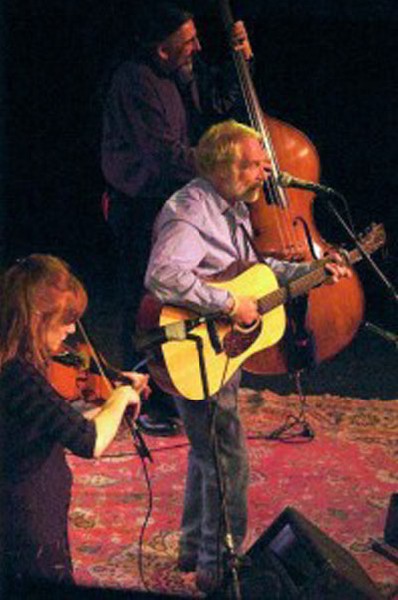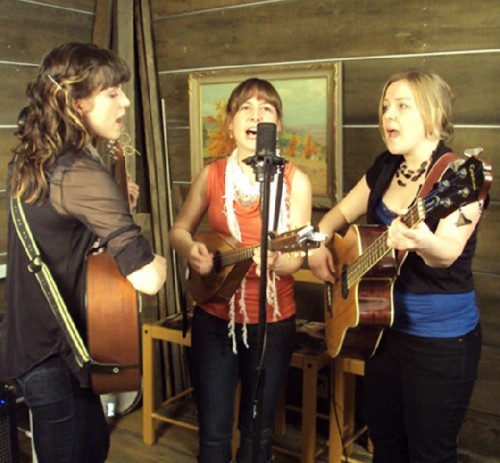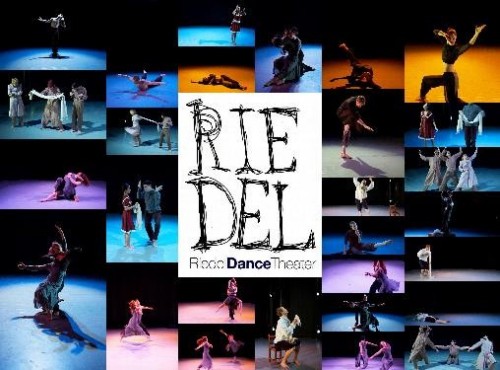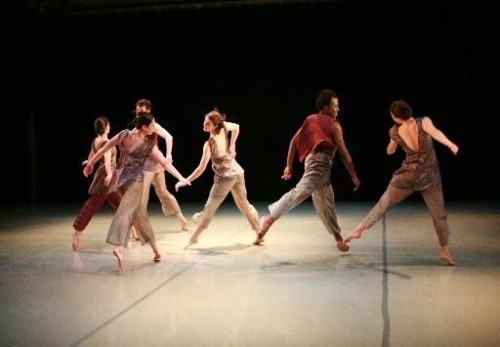Eagle Hill Launches Fourth Season
Interview with Director Sean Hunley
By: David Wilson - Sep 28, 2011
It has been two decades since I forsook my urban surroundings and gleefully settled in a rural community in the middle of Massachusetts with nary a traffic light, only one store and a census dominated by livestock. I am not complaining. I revel in being able to see the stars at night, weather permitting, in having intimate knowledge of the phase of the moon, weather permitting, in picking fresh tomatoes off the garden vine for lunch or dinner, season and weather permitting.
The joys of rural life do come at a cost. Aside from a need to pay closer attention to weather, there are few restaurants and they are much farther flung and quite earlier closing. Until recently, there is little in the way of cinema or live performing arts within an hours drive.
For an art and media junkie like myself it required a lot of adjustments involving a heavy reliance on electronics and a rediscovery of that most wondrous of institutions, the public library.
But the unique intimacy that can only be experienced of a live performance was one sacrifice to which I had become inured.
My discovery, two years ago of a new first class performing arts venue within a few miles of my refuge, therefore, was of profound importance to me and, I can confidently assert, to a goodly percentage of my nearby if widely spaced neighbors.
Since then I have written often of The Eagle Hill Cultural Center in Hardwick and reviewed a number of their presentations. Young as the program is, beginning its fourth season this month, I wanted to examine its success and preview the coming season. With that in mind I made arrangements to sit down with Director, Sean Hunley, for an extended chat.
I began our dialogue by asking Sean what a review of the past three seasons led him to conclude about the future.
SEAN: Season one, in the entire season we sold just over 5,000 tickets, season two we sold about 8,500 tickets, and last season we sold just over 10,000 tickets. The other interesting statistic is our number of season subscriptions. For Season 1 we did not offer subscriptions. Season 2, we sold about 25, Season 3 we sold about 50 and this season we have already sold about 112, and we seem to be doubling subscriptions every year so far. We are almost a quarter of our house sold for this year’s programs just with subscriptions.
BFA: I can see how encouraging that must be. In a recent email you mentioned also being encouraged by the support you have received from the local communities.
SEAN: Yes, part of the hope when we established the Center was that we would be building a bridge to the community and really helping people to see us as part of the community as opposed to something that sort of flew in from outer space and landed here, whether people wanted it or not.
With any [private] school, there is always a bit of town and gown separation. There was the perception that we were culturally isolated from the town. That is not the reality and not the image we want to present.
Now, I think, if you ask a lot of the people in town, they will say, “We are glad they are there. We go to the Art Teas for free, we go to the gallery openings for free, we go to workshops for free and we go to wonderful performances of artists we would never get to see without having to drive long distances.”
Over the past four years I feel we have become really welcomed, something the community is proud of. We get a lot of people inviting friends, a lot of people bringing their out of town guests and giving them tours of the center as if it is kind of their own place. The will show their guests the little theater while attending an event in the larger or the larger while attending the smaller. They take people upstairs to view the exhibits up there just as if they are showing someone around their own place and I love that they feel that way.
BFA: I have experienced many similar responses from fellow participants when I have come to events here. What of the students here at the Eagle Hill School? How do they relate to the program?
SEAN: Teenagers are harder to figure out than I ever imagined. Sometimes something I have programmed with them in mind gets very little response in terms of their attendance. Other times, something I consider a lost cause with the kids gets great attendance.
For example, while knowing they are not really attracted to Jazz I booked 17 yr old Grace Kelly, a truly talented and magical performer and an obvious peer. She gave a workshop the morning of the performance, and the kids responded enthusiastically, talked with her, asked a lot of questions, were clearly interested in her and her career, and then very few of them showed up for the concert. When I scheduled a chamber music orchestra, I figured it would pretty much be a lost cause where the students were concerned and, without any promotion on my part we had a large student showing. They really enjoyed it and talked a lot about it to me afterward.
I find it really hard to predict.
BFA: Have you seen any growth in student interest?
SEAN: There is no discernible trend that I have seen. On the other hand, one aspect of the program that is quite successful is asking them to help out. They seem to enjoy volunteering. They like meeting the patrons, they like welcoming the patrons, they like to serve and they like to be helpful. It seems ironic that the best way to expose them to the performances is by getting them to help out.
Another area in which we have seen increased participation is with the Art Teas. We always get a number of students attending and I think that is because it is interactive. They like being able to comment and ask questions. They like being able to meet the artist at the end. Last year, Pat Bock involved them further by asking them to MC. This year, Lex Zee, one of our student artists will be one of our featured artists.
BFA: I have certainly noticed over the seasons that where there were a noticeable number of empty seats at the first few Art Teas I attended, I have had to hunt for a place to sit in the more recent ones. Whether it is the artists or the pastries…(?) Both are attractions for me.
Let me ask you to address the scope of your programming. Has your goal, insofar as the diversity of your programming, changed with the experience you have accumulated over the last three years?
SEAN: I think the scope has remained much the same, fairly wide, but without trying to provide “something for everyone.” We just don’t and can’t have enough events to achieve that, so I find I need to make some tough curatorial decisions, with the cultural and educational mission of the Cultural Center as my guide. Even more to the point is the limitation I have with available slots for my program.
BFA: I think we should explore that. I have always thought that the reason the number of performances you produced was limited was a factor of market, budget and growing your program at a manageable pace.
SEAN: Because we are first and foremost a school, the kids and their uses of the facilities have first priority. The result is that there are sixteen slots a year available. Of those sixteen, two are used by the school for student productions and two by our resident theater group, The Gilbert Players. So, with just 12 slots available I have to make very considered choices and stand-up is unlikely to be one of them. The same is true for tribute bands. With my limitations I want to focus on current artists and new musical creations. With that said I do want our programming to embrace a number of characteristics. I want to include indigenous music, folk, bluegrass, jazz. I want classical music represented. I want the kind of music we have designated as global sounds represented and so far Celtic has been the only kind we have presented, but I would like to present others as well. I want to include something for families and kids. I want theater and I want dance. Those are the main genres of the arts that I want represented. The bottom line is that I have such a limited performance opportunity for so many richly rewarding artists in the categories I feel are important that it would have to be an act of superlative talent, remarkable artistry and wide audience appeal to tempt me to program outside my current scope.
BFA: Is it also a matter of economics?
SEAN: Yes and no. Given an artist of great ability but little public appeal in juxtaposition with another of great ability and greater public appeal, the latter is a hands down choice because I will reach more people and bring greater aesthetic value to a larger audience. For a long time I have wanted to schedule professional dance, and this year I am taking a risk with a presentation of the Riedel Dance Theatre. I know I may very well lose at the box office, but because the ensemble is experienced with educational settings and will be giving a workshop for the students and a workshop for the community, I know I will be getting a lot for my outlay. In addition, season subscriptions this year will help defray some of the discrepancy, guarantee that some of the community will have their artistic boundaries extended and that the artists themselves will have an appreciative audience for which to perform. I think, I hope that it will allow me to take more similar risks in the future.
BFA: Let me back up for a moment and get you to be a little more explicit about this limitation you have for public performances.
-----------------------------------------------------------------------------------------------
In the interests of brevity I have taken the liberty here to condense a fairly lengthy and detailed explanation given by Sean down to a few simple essentials
First priority for use of the facilities is given to the school for assemblies and extensive classes and workshops that are part of the student’s intern program.
Then the requirements for the preparation and presentation of two annual student productions are blocked out.After that, the same consideration is given to the resident theater group, The Gilbert Players and their two annual productions.
The upshot is that after all the requirements for rehearsals, technical preparation and set construction is accomplished what is left are the 12 Performance slots discussed above.
----------------------------------------------------------------------------------------------
BFA: Let me ask at this point how The Gilbert Players came to play such a prominent role at the Cultural Center.
SEAN: When we began fund-raising for the Cultural Center, The Gilbert Players, our community’s much loved theater group found themselves without a performance space. With our space about to come on line and wanting to help anchor our program and develop a following within the community, we invited them to become artists in residence at the center. This solved their need for a performance space and provided us with a professional theater core around which we could build the rest of our program. In addition, they had a large inventory of costumes and sets, as well as extensive expertise in building stage sets and artistic design which they were willing to share. They also shared their mailing list and because they already had a sizeable and loyal following, we got the benefit of that following plus the good-will that came from giving them a secure home. In summation, they have been absolutely wonderful, helpful, energetic and creative people to work with. It has been a wonderful marriage.
BFA: How do events like Carpe Stylum get scheduled? It is in addition to your scheduled public programming?
SEAN: Carpe Stylum is a community writer’s group. They came to us looking for a space to schedule their readings. We do get numerous requests from various community organizations such as libraries, land trusts and non-profits and to the extent that we have space in our facility schedule, we try to accommodate them.
We put Carpe Stylum on our public schedule because we think it fits well with our Cultural Center goals. Audiences are small. Writers in the community come to share their work, and that includes a number of our students who get to read their work to an audience.
To the extent that we have space in our schedule and staff available to manage, we do what we can.
BFA: Turning to this season’s upcoming program say something about the first month in which you use up a quarter of your performance slots.
SEAN: We are starting off the season with two folk groups. First on October 8 is David Mallet, a veteran artist who is still writing and performing new songs but is well remembered for work he did as early as the ‘70s including widely covered and widely sung songs like the Garden Song. Ticket holders will also get to attend a free Songwriting workshop David will give here, the day before.
Then on the 14th we introduce The Good Lovelies, a trio of young women from Canada who recently won that country’s prestigious Juno award for excellence. They have been wowing audiences in Canada, the UK, Australia and the USA with great harmonies, instrumental prowess and sassy on-stage banter.
We end the month on Sunday, October 30th with our first Dance group. It is my hope that it will be the first of what will become a regular presence of Dance in our program. The Riedel Dance Theater is an ensemble that I think will entrance and fascinate our audience and their current program which translates stories inspired by the art of Edward Gorey is innovative and effective. Because we are featuring sequential art as a prominent segment of our Artists in Residence program here at the school this term, it ties in nicely.
BFA: It sounds like an ambitious beginning and I’m looking forward to all of them. We are running long here and I just want to ask one more question for now. How in the world did you ever manage to capture The Peking Acrobats for one of your performance slots?
SEAN: The Peking Acrobats are the largest most famous troupe of internationally touring Chinese acrobats. We should not have been able to present them. It was serendipity that we managed to get them as they were passing through on a midweek day when we could squeeze them into our schedule. For the people of Hardwick and Barre and New Braintree and the other small communities around us this is going to be a peak opportunity. Ordinarily this group only plays big cities.
BFA: Sean, thank you for spending this time with us and sharing your thoughts and experiences. I look forward to covering as many of your presentations as I am able and I’m sure I echo many of our communities’ feelings when I say how grateful I am to you and to the Eagle Hill Cultural Center for all that you bring into our life.
Readers may see the entire schedule for the season by visiting the Center’s web site.









